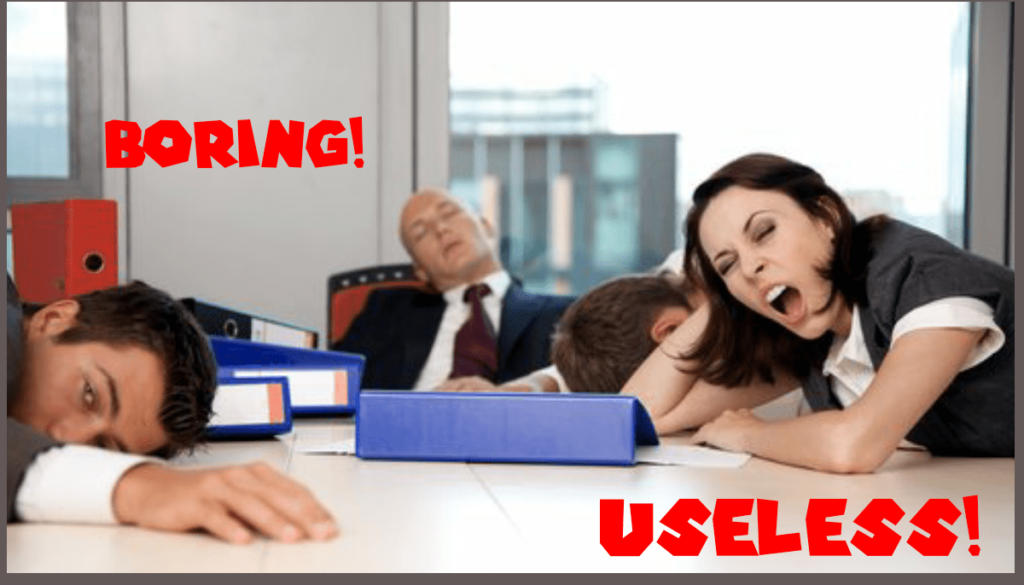
Planning and structuring effective meetings
Effective meetings need to achieve a specific singular goal. In order to achieve this goal, the right people need to be present. To avoid time wastage, only the relevant stakeholders should be present.
Many organizations creak under the weight of their own bureaucracy, with meetings called simply “because” or with the wrong personnel present. Some institutions may even choose to call a meeting simply because a VIP happens to be visiting…
Understanding the types of meetings available, their individual purpose, and who should be present will allow an organization to focus more on its core mandate and less on administrative minutiae..
We developed a short checklist that covers the broad decision steps required prior to calling a meeting:
- Why do you need to hold a meeting?
- What is the purpose of the meeting?
- Who should be present at this meeting?
- What type of meeting are you holding?
- How can people prepare for this meeting?
- What are the key topics that need to be covered and how much time is allocated to each?
- When and where will the meeting take place?
1. Why do you need to hold a meeting?
Is it because you always have it? Is it necessary, or has it outlived its usefulness or purpose? A canceled meeting is much better than one that wastes everyone’s time.
2. What is the purpose of this meeting?
Properly structured tools can be used to achieve one or more of the following goals:
- Company / team cohesion
- Create and develop understanding
- Provide a sense of direction
- Create a common vision or purpose
- Provide feedback on planned and unplanned activities
- Advancing the company / team
- Solve problems
- Make decisons
- Share best practices
- Encourage enthusiasm and initiative
- Innovation
- Pool and develop ideas
- Plan the future
- Brainstorming
3. Who should be present at this meeting?
Less is more when it comes to meetings: Jeff Bezos’s two-pizza rule
is wisdom to live by. After all, meetings are expensive
, and those with too many attendees often aren’t productive. Ask yourself why each person is there and what their role is. If they don’t have a role, or if their role is served by someone better suited, don’t invite them (chances are they’ll thank you). For those who want to attend but won’t add value, offer to send the meeting minutes.
Most importantly, if essential decision-makers or stakeholders can’t make it to your meeting, consider rescheduling it. There’s no sense in holding a meeting only to do it all over again when everyone is available.
4. What type of meeting are you holding?
A meeting is a gathering of at least three people who come together to exchange information and discussions on a set of questions. A meeting may be formal or informal. A formal meeting is required by a notice to invitees of the meeting. An informal meeting may be without any written notice such as a union meeting at lunch for a picnic. In a meeting, there is a caller and a head or chair who directs it. A meeting must contain a written account of its meetings and an agenda, with a list of things to be dealt with and the outcome should be in the form of minutes.
5. How can people prepare for this meeting?
In his book Death by Meeting
, Patrick Lencioni suggests leaving the agenda open until the beginning of the meeting. That doesn’t mean you shouldn’t consider what it looks like until the last minute. Have your preferred agenda prepared and share it in the meeting at the beginning. Most likely people will accept your plan or at least voice any necessary alterations that can quickly be agreed upon.
Rather than waiting for the explosions to happen, be prepared for the drama that may come your way. Think about which battles are worth your energy and which ones you are willing to concede. If you are mentally prepared for the emotion and conflict, you can keep your cool and will be ready to move toward resolution quickly. You might even consider having a pre-meeting with certain invitees to address specific pressure points.
Make sure everyone is clear on why the meeting is important and what the greater impact for the involved parties will be. Different than the meeting objectives, which are tactical, this is about understanding how this meeting fits into the big picture strategy. If people aren’t clear on this, the effort and results will likely be disconnected at best and useless at worse.
6. What are the key topics that need to be covered and how much time is allocated to each?
Set the rough agenda with time guides.
Always allocate time to collect action, set timelines for these, and responsible actors that will drive this item.
7. When and where will the meeting take place?
Does the meeting have to be physical? Can it be virtual? Do you need to go to a remote location? Can you hold it in-house? Do you need a facilitator? What format is the meeting? Is it an audience type, interactive, knowledge café?
As you have read, when we think about meetings before the meetings, we are working towards better meetings! In another post we describe a practical way to put the above to good use.
we describe a practical way to put the above to good use.
